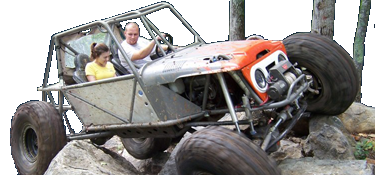On the top picture, it almost looks like that amount of overlap was done for convenience, as one end of the overlap joint has a body bracket and ends at a step in the chassis, and the other end of the overlap joint locates the leaf spring bracket. It's a shitload of overlap, plus a super thick shear plate welded across the joint, so there's likely a huge amount more joint strength than is actually needed.
I'd also make the shear plate taller, so it covers more of the sides of the rails, and make it out of thinner material because it's not necessary. The shear plate transfers load from one piece of tubing the other (and away from the parallel weld joint), and there's no need to use steel that thick because it's totally in shear.
The basic theory is that you want enough length to transfer bending load from one piece of rail to the other as a smooth transition, without having the joint short enough to really stress the welds or make fold points at the ends of the rails. Cutting the rail ends at an angle (like one of the rails in the picture, but not the rail) makes the rail end theoretically "softer" in bending and will make a smoother load transition from one piece to the other without making a hard transition at the end of the joint. Looks nicer too.
Both pictures seem like massive overkill for the amount of overlap. I assume it's a matter of "that looks strong enough" instead of realizing that your overlap joint is many times stronger and stiffer than the tube itself.
The bottom picture overlap length appears to be at least 5 times the height of the tubing, which intuitively is far more than necessary. I would think that cutting the length by half (even without a shear plate) would still be totally overkill. Most of the time I've seen people do probably 5 or 6 inches of overlap for 2x4 steel, which ends up making a nice looking Z offset (when the ends are tapered) instead of a really long ugly splice joint.
To be honest, I'm not sure what the proper calculated overlap would be, as that's not my area of expertise. I believe that it's done from the bending loads, and the total weld length of the joint. So a 16+ inch overlap (from your post) is 32+ inches of weld length. Intuitively though, from a bending load standpoint you don't need 16 inches of overlap for 2x4 steel, and you don't need 32 inches of weld length to transfer that load.
No big deal though, it's just a bunch of extra unnecessary weight, which is really the only downside.






